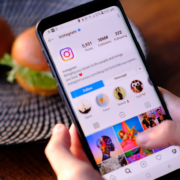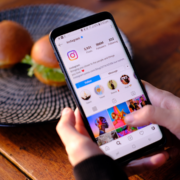How To Optimize Your HubSpot For Effortless Marketing
As marketers, we often spend a huge amount of time creating content that is designed specifically for your customers, prospects, and leads. We are writing, analyzing, optimizing, and innovating every day. Sometimes, we’ll spend hours writing a single caption.
In fact, we usually spend so much time planning and executing the email strategy, we hardly ever connect with other marketers on our teams who manage our blogs and other content, including social and chat, website, video strategy, events, PR, and more. And this isn’t unusual.
Traditionally, marketers focus on the details — they sweat the small stuff and divide to conquer. One marketer may be in charge of improving conversion metrics, while another focuses on SEO and someone else optimizes product pages. You might even have an intern creating some Instagram stories.
But when marketers complete these tasks in isolation, prospects and customers are left with a disconnected experience.
If you want your business to succeed, you need to take a step back and see the bigger picture. How do all your marketing activities connect? What do your customers really experience? And how can you keep your team working towards the same goal? Let’s find out.
The conversion process is longer than you expect.
We like to believe that every customer takes a predictable, linear path from awareness to consideration to purchase. This process starts with an ad, a blog post, a call-to-action, an email newsletter, and then transitions smoothly into a purchase. Done and done.
Of course, some prospects will take this direct route through your marketing funnel, but most take several detours along the way.
By trying to force the customer journey into a linear, step-by-step mold, you risk losing prospects that don’t fit your design. Consumers want information before they buy, and there isn’t a one-size-fits-all method for getting it.
The truth is, the customer journey is messy and can be difficult to predict — everyone’s is a little different. Some customers may look for information about your brand through search, while others may click on an ad, an email, or seek out reviews from friends.
And the journey doesn’t stop there. Marketers shouldn’t stop interacting with customers as soon as they click “buy” — if you want to maintain and nurture unique relationships, you need to continue to interact with customers after you make a sale. That’s why it’s important to build strong bridges between your marketing efforts to build one cohesive brand experience.
Build strong bridges using your HubSpot CRM.
As a marketer, you’re probably used to using multiple tools and point solutions to connect with prospects and customers. Not only is this method inconvenient, but if all your marketing efforts aren’t connected by a customer management solution or CRM, it also creates a disjointed experience for customers. Marketers need to take a step back and see the bigger picture. If you want to build a complete customer experience, focus on connecting your marketing software with the tool that should be at the core of your marketing efforts: your company’s trusty CRM.
CRMs are traditionally considered a tool for sales teams to track leads, prospects, and customers. With them, reps can see every interaction a contact has had with a brand. Everything from calls with a sales rep to website visits is tracked and logged in a contact record.
While you may be familiar with a CRM, you probably aren’t using it to its full potential. Masters of email marketing, live chat, ads, and social media tools they may be, marketers rarely use a CRM for anything other than creating email lists, if at all. Think about it. You probably stress over the last-minute details of a campaign and track its success, but I’m guessing you rarely check to see how your campaigns are influencing individual contacts, or who’s consistently engaging with your marketing efforts.
By putting it at the center of your marketing strategy, you can truly personalize your messaging. You can use any data point or marketing engagement metric to segment contacts beyond lifecycle stages. This allows you to create more targeted, meaningful content and ads and expedite the sales process, helping your entire company grow better. Without a CRM, your personalization efforts are smoke and mirrors at best, and insufficient at worst.
If you’re curious about utilizing the HubSpot platform or setting up your own digital marketing strategy, contact us at Digital Storyteller today!











